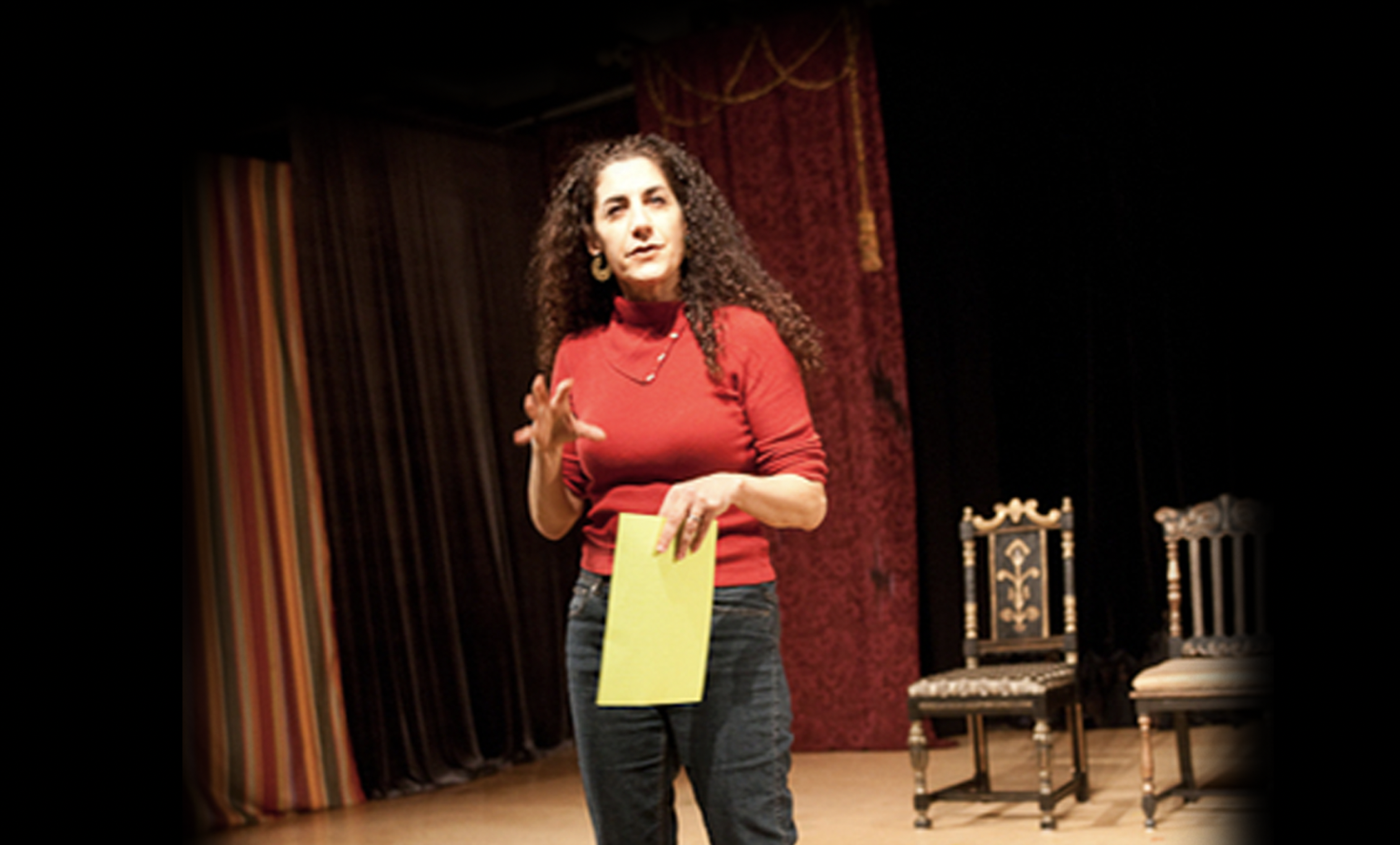
FAQ with Kari Margolis
-
Passion and a dream made possible with the artistic support, commitment, and creativity of an ensemble of actors.
When we returned to the United States, after a decade of training and creating work in Europe and Montreal, and touring internationally, we had a strong vision of the kind of visceral, imagistic, multimedia theatre we wanted to create.
We believed then, and still do now, that the most meaningful theatre is actor-centered, built with an ensemble of actors who contribute to the creative process. Actors who are physical and vocal powerhouses can bring poetic life to ordinary objects, sing, and dance—whatever is needed to best tell the story.
The depth and breadth of experience and commitment we were seeking in ensemble members was not something we felt we could just hold auditions for.
So we established a training center in Park Slope Brooklyn to do creative research and daily training.
Perhaps NY in the early ‘80s was a ripe time for such a vision, because we were immediately joined by 14 eager actors ready to open themselves up to something new and challenging.
Over the next two years this group held steady and their commitment to their craft—and each other—turned them into a creative force. It was clear we needed to take the next step, turn our practice into action, and create a show.
With the addition of four awesome musicians, a brilliant production team, and a belly dancer, AUTOBAHN came to life!
The positive response to the work was sudden and overwhelming. New York Times cover of the cultural section, Washington Post rave review leading to lines around the block at the Baltimore Theatre Project, and a management company offering to take us on.
Suddenly we were touring around the country and abroad. And, without planning to do so, we created a company!
This original founding ensemble stayed intact for five years touring AUTOBAHN worldwide, and creating and touring Decodance and The Bed Experiment. Many of these artists are still central to the company or maintain strong artistic ties. -
The seed for each new work comes from an organic melding of life events, the strengths and weaknesses of the individual actors with whom we are working, and an artistic response to past repertory productions.
Let me unpack that.
MB Adaptors productions speak to the human condition, but in ways that are not didactic. We don’t directly reference current events, but create theatrical moments that allow us to look at circumstances from unexpected perspectives. Many of our plays merge time periods and create worlds that are odd, yet strangely familiar at the same time.
The artistic growth of the ensemble is paramount, and the company takes on projects that will offer the actors an opportunity to stretch themselves and develop new skills.
We are always seeking new ways to tell stories. Ways that are nonlinear and stimulate the audience’s imagination. This inspires us to create different dramaturgical structures for each project.
-
MBA’s process for creating plays starts on day one of each actor’s training. Since Margolis Method approaches theatre from the concept that all things are interconnected, our actor training includes the skills needed to build and interact in an environment that is highly conducive to the creation of great theatre.
In this environment, actors are empowered as we celebrate each other's creative discoveries. By being held accountable to analyze and “steal” what we learn from each other's exploration, the bar of the entire ensemble is raised. One actor’s success inspires every actor’s growth and ultimately the creation of our best possible work.
We embrace limitations and improvisation.
Limitations feed our imaginations and give us a strong foundation from which to improvise. For example, what happens when characters can only travel in straight narrow hallways, or can only communicate with each other facing back-to-back?
The art is knowing what limitations will inspire the ensemble to explore the themes of the particular project.
Theatre happens when we carefully release limitations or apply new ones to layer and build a character or scene.
-
We see creation and training as inseparable. Every play we’ve written has required the ensemble to build new skills.
We spent six months exploring the muscular mechanics needed to create living marionettes and hand puppet characters for PULLING STRINGS. We needed to build enormous upper body strength and stamina to create the tribe of THE BED EXPERIMENT. We learned to trust our skills while hurling ourselves through the space, while barely being able to see through our face coverings, in SUITE SIXTEEN.
Ensemble members are often Margolis Method faculty members as well. Researching, breaking down the specificity of exercises, and honing our physical, vocal, and creative instruments is a part of our daily lives.
-
Living, breathing, vulnerable, unexpected, dreamlike, wry, imagistic, musical, textual, sweaty theatre.
-
The source of our work is purely theatrical, purely birthed from the imaginations of the ensemble.
We do not draw our inspiration from literature or other works of art. We do not dissect or reinterpret pre-scripted plays.
We start with a question, an empty room, and a creative process.
